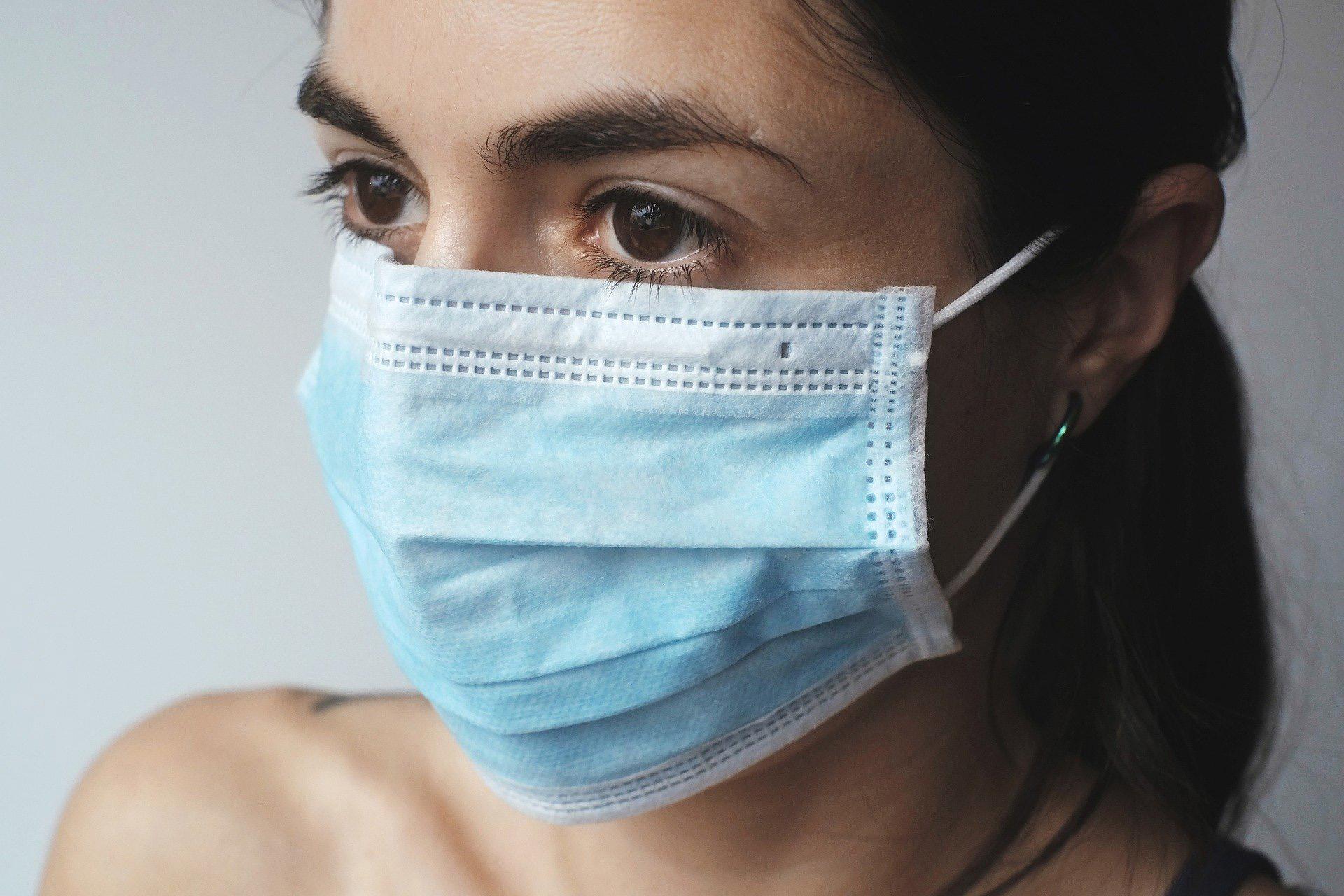 (Juraj Varga / Pixabay)
(Juraj Varga / Pixabay)
Wearing a mask, washing your hands frequently and using hand sanitizer are important measures to help prevent the spread of the coronavirus, but they can take a toll on your skin, causing dryness, irritation, rashes and “maskne” – or acne where face coverings touch the skin.
What can you do to prevent and treat these issues? Follow these tips from Chicago dermatologist Dr. Carolyn Jacob and the American Academy of Dermatology Association.
Help! I’m breaking out all over my chin.
“Maskne is real acne coming up under the mask area because of the heat and rubbing (of the mask), oils are getting trapped into the pores more because there’s nowhere else for them to go,” said Jacob, a dermatologist and medical director at Chicago Cosmetic Surgery and Dermatology. “When you can take a mask off, take it off. If you’re at home, don’t wear it in the house if it’s unnecessary.”
After wearing a mask, wash your face using a salicylic acid-based cleanser, which helps degrease the skin and unplug pores, says Jacob. Use the cleanser once or twice a day, depending on your skin type: twice a day for oily skin; once a day for dry skin, using a lower concentration of salicylic acid so the skin isn't aggravated, said Jacob.
Another option is to use cleansers with benzoyl peroxide, which “helps explode the bacteria that causes inflammation and acne in the first place,” Jacob said. Benzoyl peroxide products can bleach fabric, so don’t use your favorite towels or wash cloths with the products.
While you may feel the urge to use a face scrub, don’t. “When you use acne scrubs when you already broke out with acne it’ll make (skin) more inflamed and red,” said Jacob. “That’s the opposite of what you should do.”
Only have a few acne bumps? Use salicylic acid spot treatments on them. “Beware: too much can cause irritation and dryness,” said Jacob. “Don’t overuse.”
You can also treat acne with light therapy, which can be done at home or in a dermatologist’s office, according to Jacob. “Blue light therapy helps decrease inflammation and bacteria causing acne itself,” she said.
Dermatologists can also prescribe antibiotic and anti-inflammation creams to patients.
To prevent maskne, don’t wear makeup under your mask. “The fresher the face, the better,” said Jacob. But if you choose to wear makeup under your mask, avoid cream or liquid products and stick with pressed or loose powders.
Another easy way to prevent maskne: Wear a clean mask every day and wash masks after each use. (Get tips for cleaning masks from the Centers for Disease Control and Prevention.)
In addition to maskne, dermatologists are seeing an increase in patients with rashes around their mouths or at the edge of their nostrils. “We’re seeing a ton because of masks,” said Jacob. Hydrocortisone creams or gentle cleansers, like CeraVe can help treat the condition.
The backs of my ears are raw from my mask straps. What can I do?
“The number one thing you need to use is something to protect the skin, like Aquaphor or Vaseline,” says Jacob. She recommends applying these products to irritated areas including behind the ears, the bridge of the nose or chin before putting on a mask.
“The only downside is (these products) are greasy and can get in your hair or on your nose or chin and cause breakouts,” she said. If you’re worried about the grease factor, use a sensitive noncomedogenic moisturizing lotion instead.
In addition to irritation caused by masks, dermatologists are seeing an increase in seborrheic dermatitis, or dandruff of the scalp or face, according to Jacob, who believes it could be caused by mask wearing as well as the recent hot weather. Treatment usually requires an anti-yeast medication, which Jacob says can be bought without a prescription.
“Nizoral cream can sometimes calm (seborrheic dermatitis) down, and if you have a lot of redness and itchiness, you may need a hydrocortisone cream as well twice a day for up to 10 days,” said Jacob.
Heat can also aggravate rosacea, a condition that can cause people to blush more easily, and cause breakouts all over the face, particularly areas covered by face masks, says Jacob. “Most rosacea medications combat that,” she said, adding there are prescription creams dermatologists can prescribe as well to calm redness and inflammation.
My hands are raw from constantly washing and sanitizing them.
Rather than use scalding hot water, dermatologists recommend using lukewarm water. After washing for at least 20 seconds, don’t dry your hands off completely – leave some water on them or let them air dry.
While your hands are still slightly damp, apply a hand cream or ointment, according to the AAD. Jacob recommends applying moisturizers with ceramides in them or products with shea butter or petroleum.
After using hand sanitizer, you can apply a hand cream or ointment immediately after the sanitizer dries. For people with sensitive or dry skin, Jacob recommends using aloe-based hand sanitizers because they can be less irritating.
Be sure to reapply lotion every time you wash or sanitize your hands to heal dry skin.
Contact Kristen Thometz: @kristenthometz | (773) 509-5452 | [email protected]








